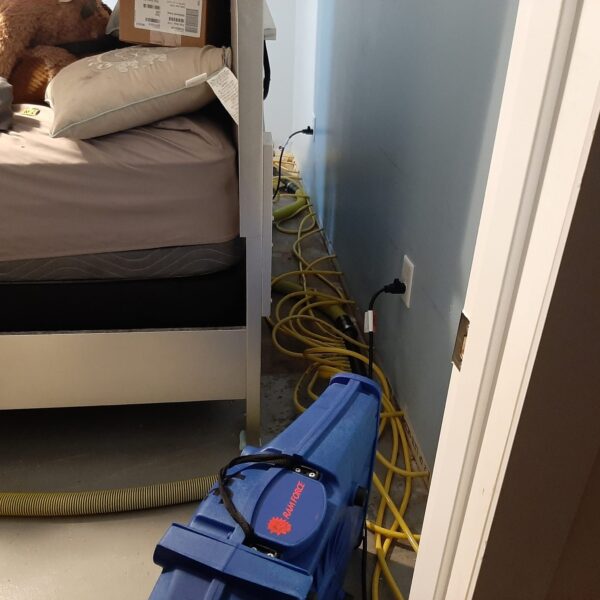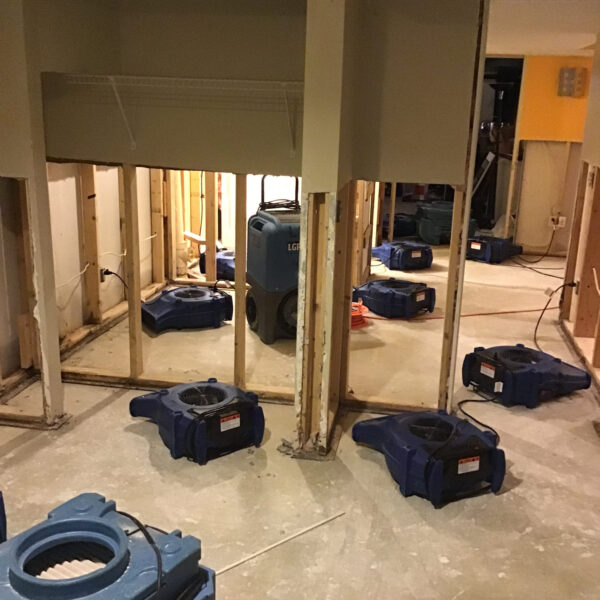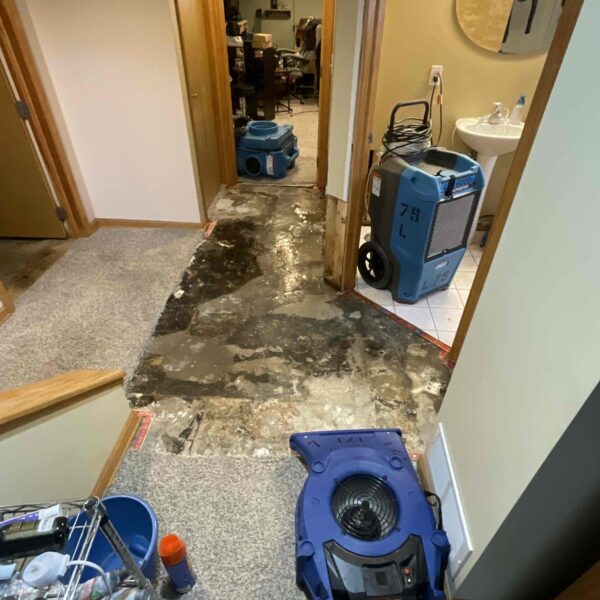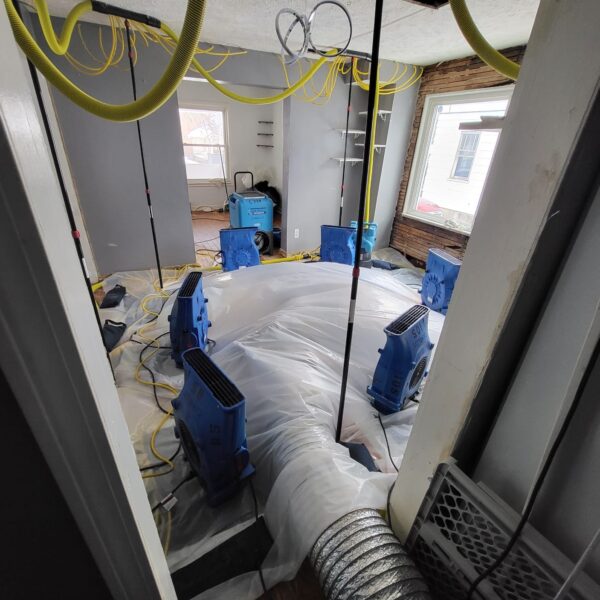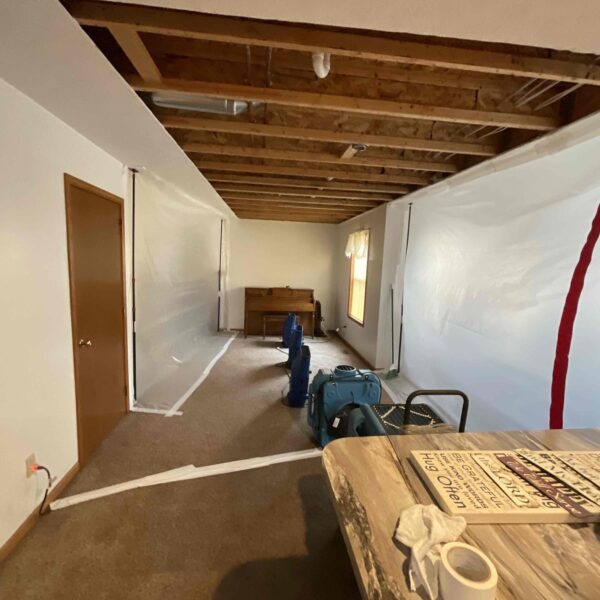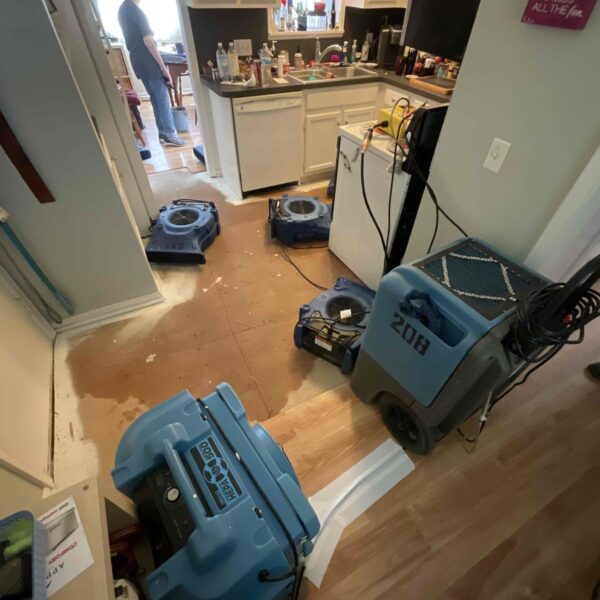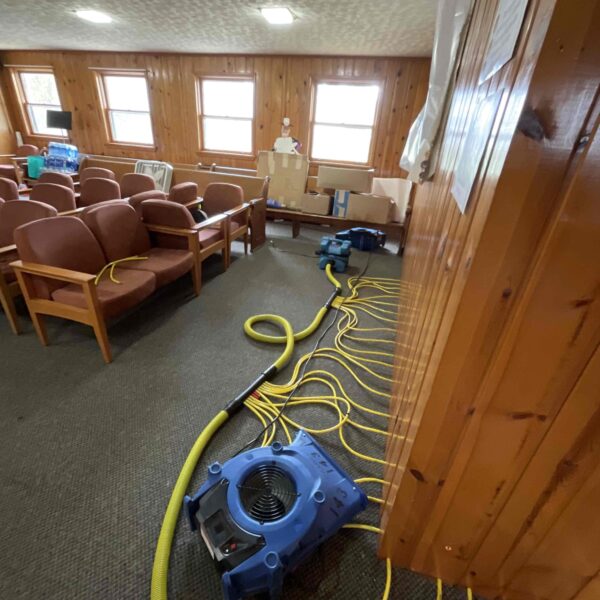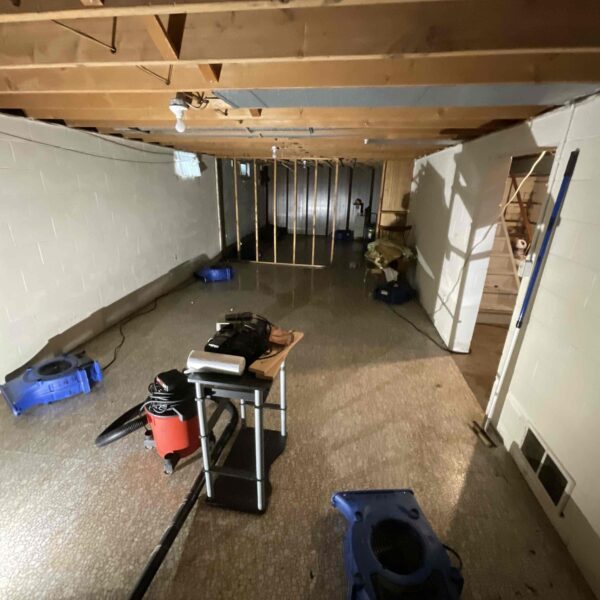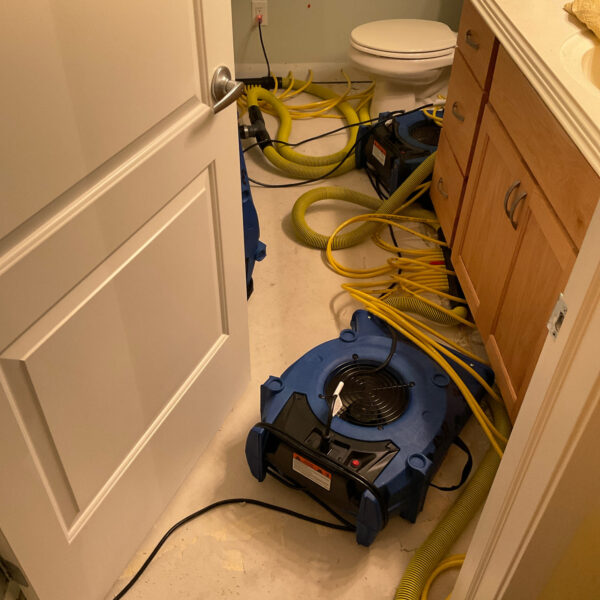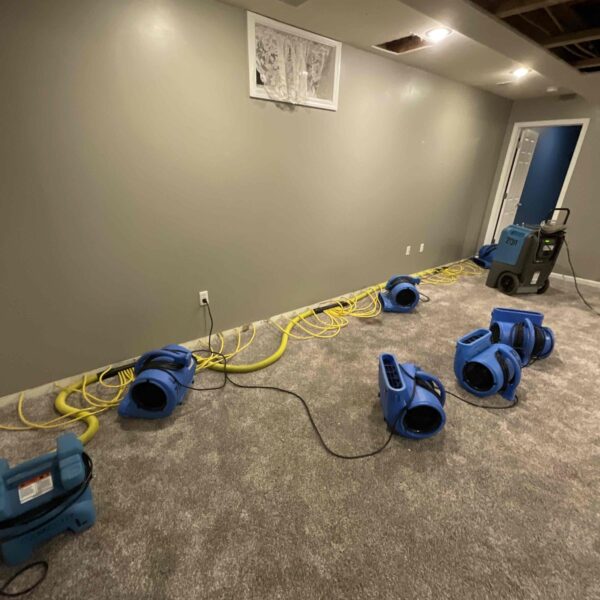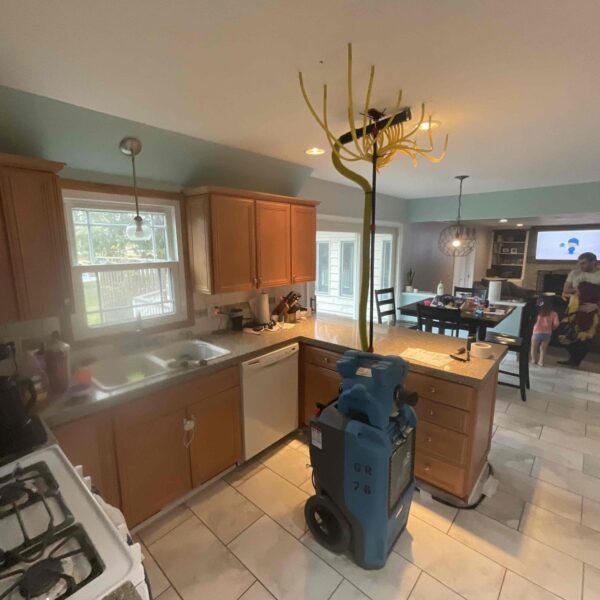Mold Remediation Services in Grand Rapids, Wyoming, & Kentwood
Mold is one of the most damaging contaminants you can encounter in your home. It can begin growing within just 48 hours of moisture exposure, and once it takes hold, it can lead to serious structural damage and pose health risks to you and your family. That’s why prompt mold removal and remediation services are essential.
At Camelot Emergency Water Removal, we offer fast, professional mold remediation to protect your property in the Grand Rapids area. If you suspect mold growth following recent water damage, contact us right away—and we’ll be on our way.
Mold & Remediation Experts Since 1993
At Camelot Emergency Water Removal, we take mold seriously. With nearly three decades of experience, our team specializes in identifying, containing, and eliminating mold infestations while addressing the underlying moisture issues that cause them. Our comprehensive approach ensures not only the removal of visible mold but also the prevention of further growth.
Why Mold Remediation Should Never Wait
Mold doesn’t just stay put; it spreads quickly and aggressively, especially when moisture is present. Don’t leave it to its own devices—acting fast is essential to stopping the damage before it worsens.
Why immediate mold remediation matters:
- Spreads Fast: It can begin growing within 24-48 hours of moisture exposure.
- Targets Multiple Surfaces: Wood, drywall, tiles, carpets—mold doesn’t discriminate.
- Health Risks: Mold exposure can trigger allergies, asthma, and respiratory issues.
- Structural Damage: Mold can weaken walls, ceilings, and even your home’s foundation.
- Costly Repairs: The longer you wait, the more expensive the cleanup and restoration will be.
Don’t let mold take over; call in the experts at Camelot to take care of the job so you can rest easy.

Do’s and Don’ts of Mold Remediation
Mold isn’t just an eyesore; it can cause serious health problems and leave you with an uninhabitable home. Whether it’s from a storm-damaged roof or a slow leak, moisture spreads quickly. Handling it the wrong way can make the problem worse, so it’s important to know the dos and don’ts before taking action.
Don’ts:
- Wait to address the issue: Delaying treatment increases health risks and repair costs.
- Let kids or pets be near the area: Mold can be extremely toxic. Keep vulnerable groups away from affected areas.
- Circulate air through the HVAC systems: Airflow can carry spores throughout your home/business, worsening the infestation.
- Attempt DIY methods: Store-bought chemicals and fans may trigger the mold to spread even more. Covering mold with paint only masks the issue and lets it continue to grow behind the scenes.
Do’s:
- Inspect your roof annually: Storm damage and leaks can often lead to mold. Annual inspections help to catch the problem early.
- Check your insurance policy: Know what mold-related damage is covered before you file a claim.
- Identify and fix the moisture source: Stopping leaks and sealing vulnerable areas helps prevent mold from growing or spreading further.
- Call in professionals: Professionals use commercial-grade tools to remove mold safely and completely.
When in doubt, don’t take chances. Call a licensed mold remediation expert as soon as you can if you suspect a problem.
Give Us a Call at (833) 252-0488
Our Mold Remediation Process
Mold remediation isn’t something you should do on your own. If mold levels are abnormally high, as determined by indoor air quality testing or an inspection, remediation is recommended. Our process includes:
- Assess and Isolate: Identify the cause of mold, locate the infected areas, and check for potential hidden growth.
- Suit Up for Safety: We use specialized protective gear, including booties, googles, and respirator masks.
- Use Moisture to Suppress Dust: We use humidifiers/other tools to create an ambient mist to prevent spores from traveling.
- Remove Affected Building Materials: We remove and dispose of all contaminated materials, including drywall, carpeting, and insulation.
- Clean Remaining Surfaces: Materials that cannot be removed are cleaned with specialized brushes, detergent solutions, and antimicrobial wipes.
- Contents Restoration: Salvageable goods are taken off-site for specialized cleaning.
- Apply Biocide & Encapsulating Products: EPA-approved biocide treatments are applied to eliminate remaining mold spores, followed by specialized mold-resistant encapsulating products to prevent future infestations.
- Sanitize Egress Areas: We then remove all contaminant barriers and use HEPA-approved vacuum cleaners to capture any loose spores.
- Complete Drying: Industrial-grade dryers, fans, and dehumidifiers are used to prevent mold recurrence.
- Post-Remediation Clearance Testing: Last, an inspector conducts testing for humidity levels, moisture readings, visual indicators, and airborne spore samples to verify the success of the mold remediation.
Serving Homes and Businesses Across Michigan
Camelot proudly serves residential and commercial clients throughout Michigan, with special expertise in the Grand Rapids, Wyoming, and Kentwood areas. Our specialists will handle returning your property and home to its pre-damaged state. We provide tailored solutions for effective mold remediation in our local communities.
Signs You Might Need Professional Mold Remediation
Here are some key warning signs to watch for in your home:
1) Moisture/Condensation
Damp spots, water stains, or persistent condensation on walls, windows, or ceilings create the perfect conditions for mold growth. Be sure to pay attention to cold surfaces like windows and exterior wall corners where moisture usually collects.
2) Visible Mold
Any discoloration that looks fuzzy, powdery, or slimy could be mold. They can be colored back, gray, green, white, or even pink and orange. Even small patches deserve attention as they often indicate a larger hidden problem.
3) Spotted Clothing
Unexplained spots on clothes, especially in closets, often signal mold issues. Never store damp clothes in enclosed spaces, and regularly check storage areas with limited airflow.
4) Allergic Reactions
If allergy symptoms improve when you leave a home but worsen when you return, mold could be the cause. These reactions often mimic seasonal allergies but are location-specific.
5) Asthma Flare-Ups
Mold is a common trigger for asthma attacks. If breathing difficulties increase within the home, consider mold as a potential culprit.
6) Fatigue
Unexpected tiredness that persists despite adequate rest may be linked to mold exposure. Mold can force your immune system to work overtime, leaving you feeling consistently drained.
7) Skin Rashes
Unusual skin irritation, redness, or rashes that develop without a clear cause might result from mold contact. These reactions typically clear up when away from the affected environment.
8) Musty Odors
A persistent, earthy, damp smell that doesn’t disappear with cleaning usually means hidden mold. The stronger the smell, the more severe the problem likely is.
9) Wall Discoloration
Stains, bubbling paint, or peeling wallpaper (especially after water exposure) frequently signal moisture problems nd mold growth behind the surface.
10) High Humidity
Indoor humidity levels of about 50-60% create ideal conditions for the mold. Use dehumidifiers in damp areas and monitor humidity levels, especially in basements, bathrooms, and poorly ventilated spaces.

The Health Risks of Indoor Mold Exposure
- Respiratory issues, including coughing, wheezing, and asthma attacks
- Allergic reactions such as sneezing, runny nose, and eye irritation
- Skin irritation and rashes
- Headaches and fatigue
- Sinus infections and congestion
- Prolonged exposure can lead to lung damage and infections
- Immune system effects, particularly in vulnerable individuals
Why Choose Camelot for Remediation Services
- Certified mold remediation specialists with extensive training
- Nearly three decades of service excellence since 1993
- Family-owned and operated
- Comprehensive approach addressing both mold removal and moisture control
- State-of-the-art equipment and techniques
- Customer satisfaction guaranteed
- Preventive recommendations to avoid future mold issues
Reach Out Today for Professional Mold Remediation in Grand Rapids, Wyoming, Kentwood & Throughout Michigan
Don’t let mold compromise your health and property value. Contact Camelot Emergency Water Removal today for expert mold remediation service throughout Michigan. Our skilled technicians respond quickly to mold emergencies, providing thorough inspection, safe removal, and effective prevention strategies.
We pride ourselves on excellent customer service, clear communication, and lasting results that protect your home or business from future mold problems. Call now for a consultation and take the first step toward keeping your home and family safe.
Give Us a Call at (833) 252-0488 or Contact Us Now
Mold Remediation FAQ
1) What is mold remediation?
Mold remediation is the professional process of removing mold, treating affected areas, and implementing measures to prevent future growth. It goes beyond simple cleaning to address the root cause of the mold problems.
2) What causes mold to grow indoors?
Mold grows when airborne spores land on damp surfaces in your home. Common causes include water leaks, flooding, poor ventilation, and high humidity levels.
3) Can I remove mold myself?
While small areas (less than 10 square feet) of nontoxic mold may be handled carefully by homeowners, professional remediation is recommended for larger infestations or black mold. DIY attempts often fail to address the underlying issues and can spread spores throughout your home.
4) How long does mold remediation take?
Most residential mold remediation projects take 1-5 days to complete. The timeline depends on the extent of the infestation, areas affected, type of materials involved, and any necessary reconstruction.
5) Will mold come back after remediation?
Mold shouldn’t return if the underlying moisture issues are properly addressed and the remediation is thorough. However, new water intrusions or humidity problems can lead to new mold growth if not addressed quickly enough.
6) Do I need to test for mold before remediation?
If mold is clearly visible, testing isn’t usually necessary. However, testing can be valuable for identifying hidden mold, determining the type of mold present, or verifying successful remediation.



